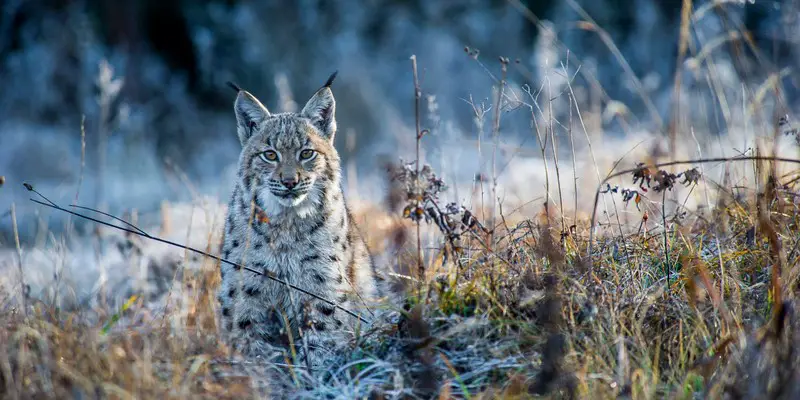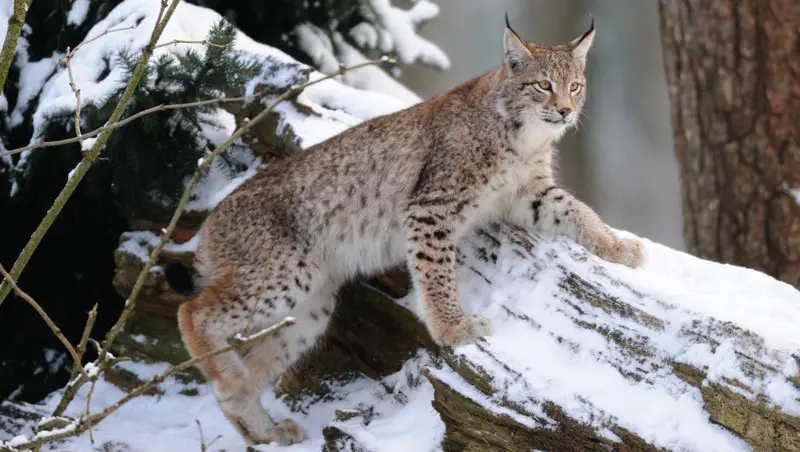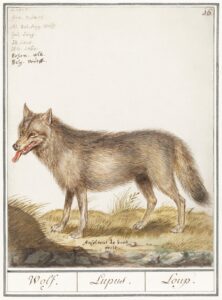Introduction to Lynx Hunting in the U.S.
Lynx hunting in the United States presents a unique set of challenges and rewards, attracting seasoned hunters seeking a distinctive experience. This guide delves into the intricacies of lynx hunting, covering methods, tactics, and the best practices for a successful and ethical hunt.
Understanding the American Lynx

The Lynx’s Physical Attributes and Behavioral Patterns
The American lynx, a stealthy member of the feline family, is renowned for its acute vision and hearing, coupled with a cautious demeanor that makes it adept at evading humans. Key to tracking this elusive predator are its distinctive physical traits: a trotting stride of about 40 cm and nearly round paw prints, typically 8 to 12 cm across, lacking visible claw marks. Recognizing these signs is crucial for hunters to track and anticipate the lynx’s movements effectively.
Predatory Habits and Dietary Preferences
The lynx primarily preys on the white hare, supplementing its diet with birds like grouse and occasionally small ungulates and foxes. Understanding the lynx’s dietary preferences is vital for hunters to identify potential hunting grounds and anticipate the lynx’s movement patterns.
Advanced Tactics for Lynx Hunting

Utilizing Canine Companions: The Role of Dogs in Lynx Hunting
Dogs, particularly breeds like huskies, play a pivotal role in lynx hunting. Their ability to silently track and then vocally corner a lynx up a tree is invaluable. The optimal time for this method is early winter when the snow is shallow, enhancing the dogs’ tracking ability.
A Hunter’s Narrative: Success with Huskies
A detailed account from a hunter named Nikolai highlights the effectiveness of huskies in lynx hunting. He describes a scenario where, after identifying lynx tracks, he released his huskies, leading to a successful hunt marked by strategic tracking, silent pursuit, and a well-executed shot.
Ambush Hunting: Mastering the Hide Technique
Ambush hunting from a hide is a strategic method, particularly effective in areas frequented by lynx. This approach requires patience and a deep understanding of the lynx’s behavior to predict its movements and feeding times.
Case Study: A Hunter’s Patience Pays Off
An example of successful hide hunting involves a hunting director named Ivan, who shares his experience of patiently waiting in a hide and making a successful shot on a lynx. This story illustrates the importance of strategic positioning, patience, and understanding lynx behavior for effective hide hunting.
Selecting the Right Equipment for Lynx Hunting

Choosing the Appropriate Firearms
For lynx hunting, selecting the right firearm is crucial. A shotgun with smoothbore is typically recommended, offering the necessary accuracy and power for a humane kill. The firearm choice should align with the hunter’s preferred method and the specific challenges of lynx hunting in different U.S. terrains.
Optimal Ammunition for a Clean Shot
The choice of ammunition is critical in ensuring a humane and effective shot. Shot pellets are generally preferred, designed to deliver the necessary impact without causing undue suffering to the animal. Accuracy in the first shot is vital, as a wounded lynx can become dangerous and elusive.
Safety and Ethical Considerations in Lynx Hunting

Prioritizing Safety in the Wild
Safety is paramount in lynx hunting. Hunters must be aware of their surroundings, especially when hunting in snowy conditions or rugged terrains. Proper preparation, including understanding the lynx’s behavior and potential responses, is essential for a safe hunting experience.
Upholding Ethical Hunting Standards
Ethical hunting involves respecting the lynx and ensuring that each shot is as humane as possible. Hunters should aim for a clean, quick kill and adhere to local hunting regulations and conservation efforts. Ethical practices also include sustainable hunting to ensure the preservation of lynx populations for future generations.
Conclusion
Lynx hunting in the United States is a specialized and rewarding pursuit for those seeking a unique hunting experience. This comprehensive guide provides in-depth insights into lynx behavior, habitat, and advanced hunting methods, along with recommendations for the appropriate equipment. By understanding these aspects and adhering to safety and ethical standards, hunters can enjoy a responsible and fulfilling lynx hunting adventure.





